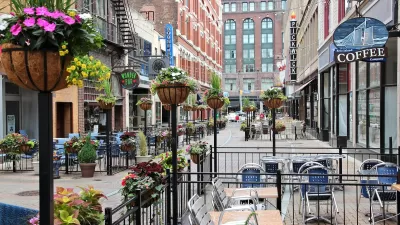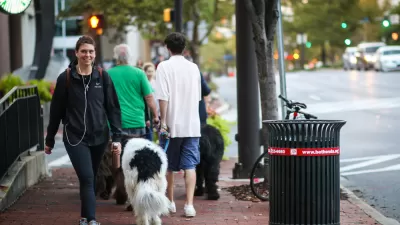Jillian Glover writes of her new perspective on what makes a city welcoming and safe for young families—the newest perspective, in fact. She's a new mother.
"Much has been written about how to create a family-friendly city (i.e have lots of parks,family programs, build larger condos etc.). But, I don’t yet have a kid, I have a baby whose needs are somewhat different than those of an older child. As a result, I am learning that cities aren’t as baby-friendly as they could be," writes Glover.
Glover describes her recommendations as especially pertinent following the recent U.S. Census data finding a baby boom in urban areas. "It’s time that cities paid more attention to the needs of young families," says Glover.
Among Glover's recommendations:
- Walkable Neighborhoods: "Being on maternity leave, I walk every day with my baby, either with a sling/carrier or stroller. It is often the one thing that puts him to sleep and allows me to run errands, get some fresh air and relax. Parents and babies benefit more from this type of experience than hauling all their equipment into a car and going to a big box store."
- Crosswalks: "As much as I love hurling my stroller into traffic and hoping someone stops, a safe crosswalk is preferable."
- Parks: "Every new parent and baby should be within safe walking distance to nature. My husband and I often take our baby to Trout Lake, a local park with a small lake that we can walk around."
- Family Advisory Committees: "...most cities have public committees. Vancouver has loads of them - on everything from LGBTQ issues to food policy. Yet the city does not have a family advisory committee that focuses on issues for young families."
FULL STORY: The Baby-Friendly City

Study: Maui’s Plan to Convert Vacation Rentals to Long-Term Housing Could Cause Nearly $1 Billion Economic Loss
The plan would reduce visitor accommodation by 25,% resulting in 1,900 jobs lost.

North Texas Transit Leaders Tout Benefits of TOD for Growing Region
At a summit focused on transit-oriented development, policymakers discussed how North Texas’ expanded light rail system can serve as a tool for economic growth.

Why Should We Subsidize Public Transportation?
Many public transit agencies face financial stress due to rising costs, declining fare revenue, and declining subsidies. Transit advocates must provide a strong business case for increasing public transit funding.

How to Make US Trains Faster
Changes to boarding platforms and a switch to electric trains could improve U.S. passenger rail service without the added cost of high-speed rail.

Columbia’s Revitalized ‘Loop’ Is a Hub for Local Entrepreneurs
A focus on small businesses is helping a commercial corridor in Columbia, Missouri thrive.

Invasive Insect Threatens Minnesota’s Ash Forests
The Emerald Ash Borer is a rapidly spreading invasive pest threatening Minnesota’s ash trees, and homeowners are encouraged to plant diverse replacement species, avoid moving ash firewood, and monitor for signs of infestation.
Urban Design for Planners 1: Software Tools
This six-course series explores essential urban design concepts using open source software and equips planners with the tools they need to participate fully in the urban design process.
Planning for Universal Design
Learn the tools for implementing Universal Design in planning regulations.
City of Santa Clarita
Ascent Environmental
Institute for Housing and Urban Development Studies (IHS)
City of Grandview
Harvard GSD Executive Education
Toledo-Lucas County Plan Commissions
Salt Lake City
NYU Wagner Graduate School of Public Service





























